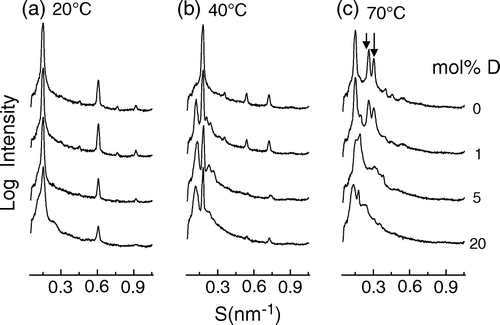Figures & data
Figure 1. Differential scanning calorimetric heating (a), cooling (b) thermograms of dipalmitoylphosphatidylcholine codispersed with dolichol C95. The proportion of dolichol C95 (mol%) in the phospholipid dispersion is indicated on the respective scan.
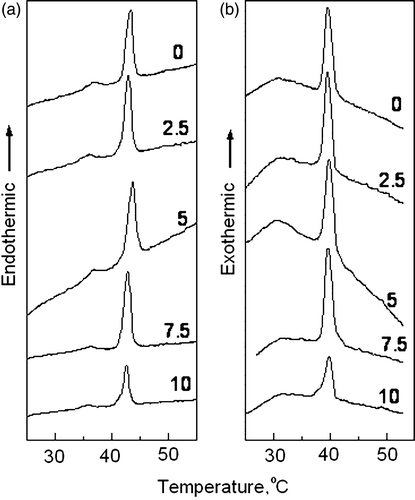
Figure 2. Plots of successive small-angle X-ray scattering intensity profiles versus reciprocal spacing recorded of a fully hydrated dispersion of dipalmitoylphosphatidylcholine (a) and a codispersion of 10 mol% dolichol C95 in dipalmitoylphosphatidylcholine (b) recorded during a heating scan at 2°/min. Each diffraction pattern represents scattering accumulated in 7 seconds.
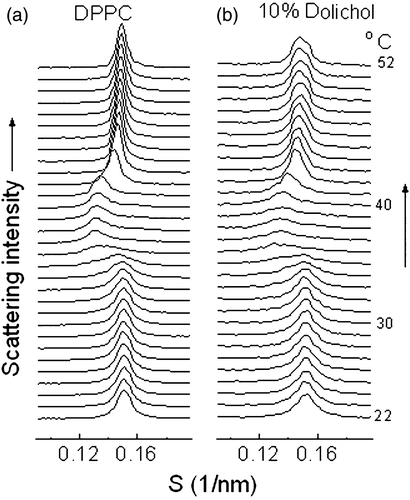
Figure 3. (A) Bilayer repeat spacing versus temperature during heating scans of mixed aqueous dispersions of dipalmitoylphosphatidylcholine containing different proportions of dolichol C95. The proportion of dolichol C95 (mol%) in the phospholipid is indicated on the respective curves. (B) Relative electron density distribution across the lamellar repeat of dispersions of dipalmitoylphosphatidylcholine without and with 7.5 mol% dolichol C95 at 22°C. (C) Wide-angle X-ray scattering intensity profiles recorded at 22°C from aqueous dispersions of DPPC and DPPC containing indicated proportions of dolichol C95.

Figure 4. (A) Static small-angle X-ray diffraction patterns of dipalmitoylphosphatidylethanolamine containing 0, 1, 10 and 20 mol% dolichol C95 at 58°C (a) and 70°C, respectively. (B) Normalized X-ray scattering intensities of the wide-angle peaks centred at 0.43nm recorded from mixed aqueous dispersions of DPPE containing 1 (□);10 (○); 20 (Δ) mol% dolichol C95.
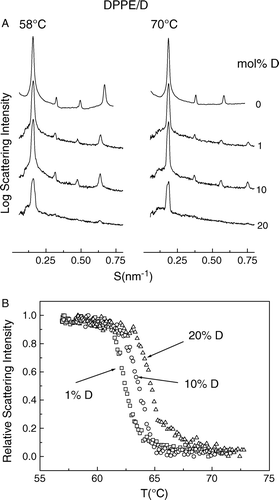
Figure 5. Plots of successive SAXS (a) /WAXS (b) intensity profiles at 2° intervals versus reciprocal spacing as a function of temperature of a dispersion of SOPE recorded during temperature scans at 2°/min heating from 20–70°C. SAXS (c) /WAXS (d) intensity profiles recorded from a codispersion of 1 mol% dolichol C95 in SOPE during an identical heating scan from 20–74°C. Each diffraction pattern represents scattering accumulated in 5 seconds.
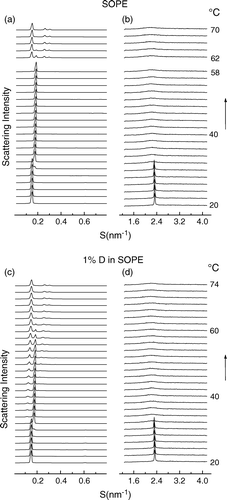
Figure 6. Small-angle X-ray scattering intensity patterns of mixed aqueous dispersions of SOPE containing 0; 1; 5 and 10 mol% dolichol C95 at three different temperatures. The profiles are plotted at the logarithm of intensity to emphasize the minor bands. Arrows indicate the 1/v3 and 1/v4 reflections from hexagonal-II phase.
